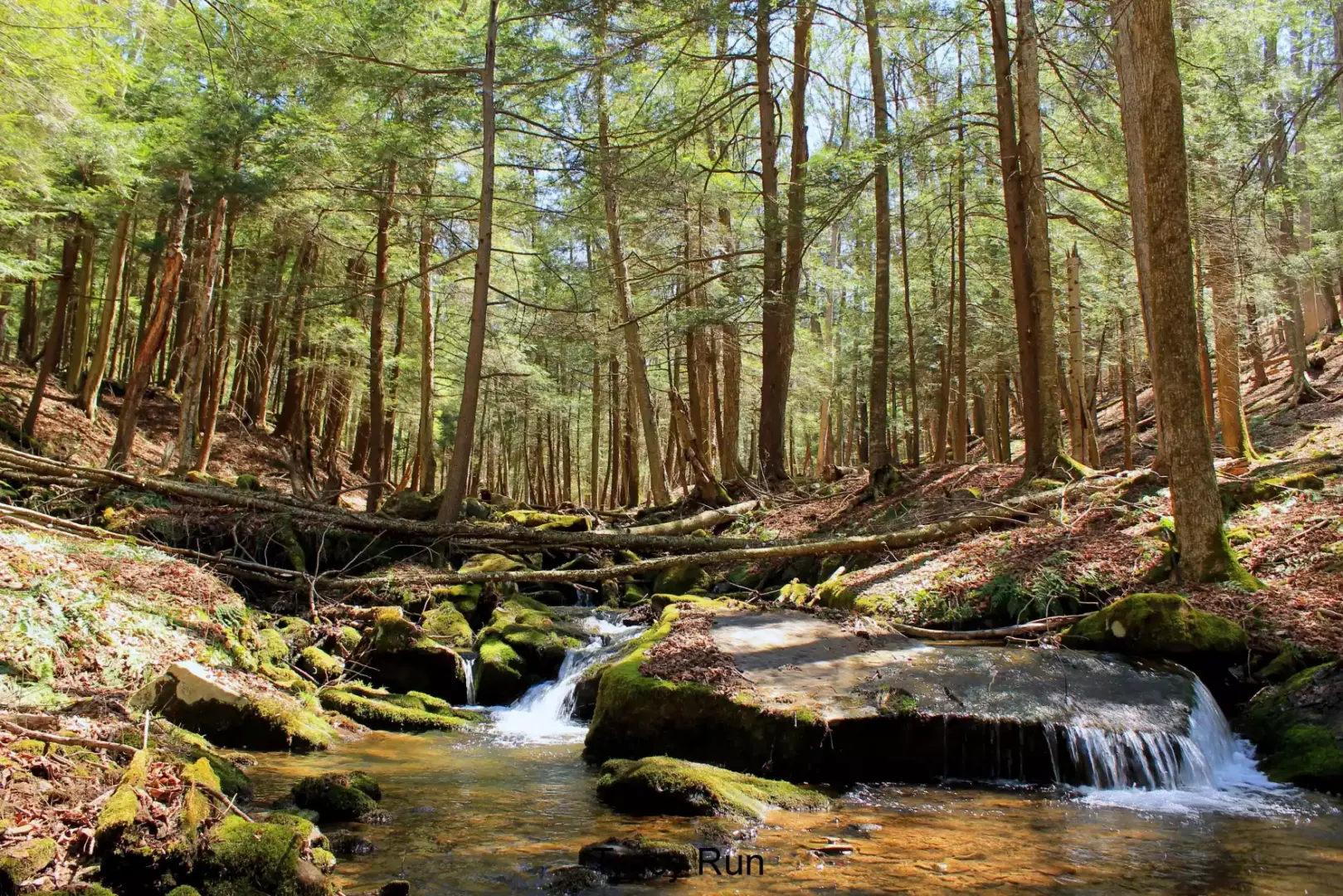
Eastern hemlock trees like these growing along Tracy Run in Allegheny National Forest are considered "keystone species" — meaning, they play fundamental roles stabilizing the forest ecology.
U.S. Forest Service

Eastern hemlock trees like these growing along Tracy Run in Allegheny National Forest are considered "keystone species" — meaning, they play fundamental roles stabilizing the forest ecology.
U.S. Forest Service

U.S. Forest Service
Eastern hemlock trees like these growing along Tracy Run in Allegheny National Forest are considered "keystone species" — meaning, they play fundamental roles stabilizing the forest ecology.
The U.S. Department of Agriculture and the U.S. Forest Service are deploying biological control methods (AKA biocontrol) in the Allegheny National Forest to help combat the non-native, invasive hemlock woolly adelgid.
The hemlock woolly adelgid, native to Japan and the Pacific Northwest, threatens eastern hemlock trees with fatal infestations since they lack predators and trees lack natural resistance.
At least, they used to.
“We’re basically facilitating an assisted migration, if you will, of known predators to help control that pest in this novel Eastern Forest ecosystem,” said Justin Lamountain, a forest silviculturist with the Allegheny National Forest.
Lamountain said the Allegheny National Forest is among partners pioneering this biocontrol effort, integrating it with chemical and forest-management techniques to help cope with infestations, which he reports have increased in recent years.
“Historically, the winters here have been severe enough to kind of keep [hemlock woolly adelgid] in check. But the last four or five winters have been relatively mild,” Lamountain said. “It’s not surprising that there’s been such a large uptick in infestations.”
First spotted in the eastern US in 1951, hemlock woolly adelgid has been recorded in the Allegheny National Forest since 2014. Three kinds of natural predators have now been released that will hopefully work together to prey on the pest across multiple life cycles. The new species are Laricobius nigrinus from the Pacific Northwest, as well as their Japanese cousins Laricobius osakensis, and silver flies (Leucotaraxis piniperda).
When asked if he’s worried about unforeseen or potentially damaging ecological impacts of introducing non-native species to the forests (think kudzu in the southern U.S., mongoose in Hawaii, or cane toads in Australia), Lamountain said there’s always reason to be concerned. Still, he said, “We feel like we’ve mitigated the risks successfully through rigorous scientific testing.”
Foresters like Lamountain say saving hemlocks is vital to maintaining healthy ecosystems across the eastern coast — ecosystems even more fragile given the shifting climate.

Get insights into WITF’s newsroom and an invitation to join in the pursuit of trustworthy journalism.
The days of journalism’s one-way street of simply producing stories for the public have long been over. Now, it’s time to find better ways to interact with you and ensure we meet your high standards of what a credible media organization should be.